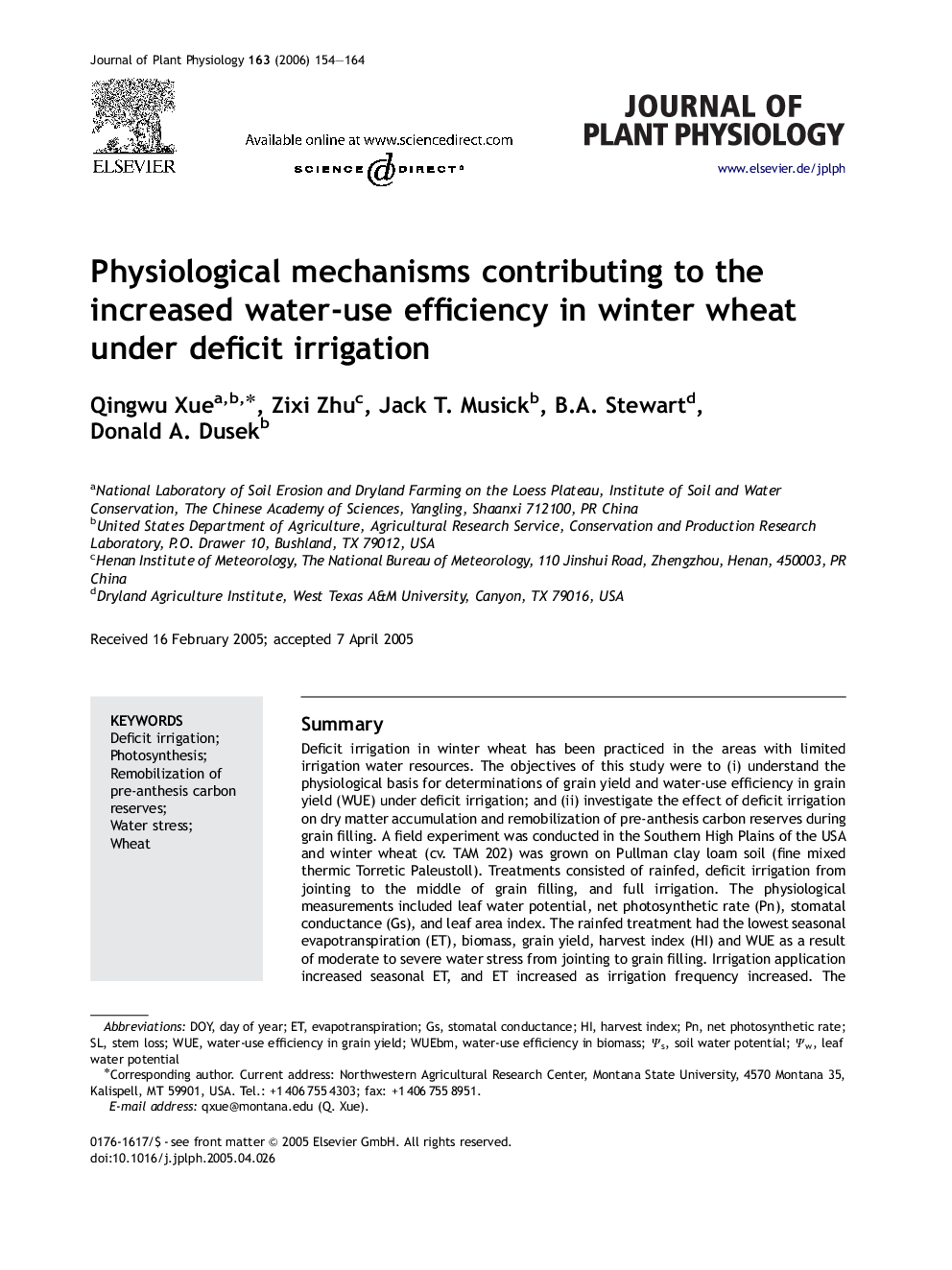| کد مقاله | کد نشریه | سال انتشار | مقاله انگلیسی | نسخه تمام متن |
|---|---|---|---|---|
| 2057596 | 1075897 | 2006 | 11 صفحه PDF | دانلود رایگان |

SummaryDeficit irrigation in winter wheat has been practiced in the areas with limited irrigation water resources. The objectives of this study were to (i) understand the physiological basis for determinations of grain yield and water-use efficiency in grain yield (WUE) under deficit irrigation; and (ii) investigate the effect of deficit irrigation on dry matter accumulation and remobilization of pre-anthesis carbon reserves during grain filling. A field experiment was conducted in the Southern High Plains of the USA and winter wheat (cv. TAM 202) was grown on Pullman clay loam soil (fine mixed thermic Torretic Paleustoll). Treatments consisted of rainfed, deficit irrigation from jointing to the middle of grain filling, and full irrigation. The physiological measurements included leaf water potential, net photosynthetic rate (Pn), stomatal conductance (Gs), and leaf area index. The rainfed treatment had the lowest seasonal evapotranspiration (ET), biomass, grain yield, harvest index (HI) and WUE as a result of moderate to severe water stress from jointing to grain filling. Irrigation application increased seasonal ET, and ET increased as irrigation frequency increased. The seasonal ET increased 20% in one-irrigation treatments between jointing and anthesis, 32–46% in two-irrigation treatments, and 67% in three- and full irrigation treatments. Plant biomass, grain yield, HI and WUE increased as the result of increased ET. The increased yield under irrigation was mainly contributed by the increased number of spikes, and seeds per square meter and per spike. Among the irrigation treatments, grain yield increased significantly but the WUE increased slightly as irrigation frequency increased. The increased WUE under deficit irrigation was contributed by increased HI. Water stress during grain filling reduced Pn and Gs, and accelerated leaf senescence. However, the water stress during grain filling induced remobilization of pre-anthesis carbon reserves to grains, and the remobilization of pre-anthesis carbon reserves significantly contributed to the increased grain yield and HI. The results of this study showed that deficit irrigation between jointing and anthesis significantly increased wheat yield and WUE through increasing both current photosynthesis and the remobilization of pre-anthesis carbon reserves.
Journal: Journal of Plant Physiology - Volume 163, Issue 2, February 2006, Pages 154–164